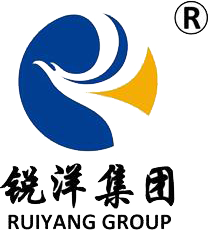
Understanding Ruiyang group Cable Types
2023-07-17 17:07Single-Mode Cables
A single strand of glass fiber makes up a single-mode fiber cable. There’s only one path through the fiber cable, which lessens signal attenuation and overlapping pulses of light that distort signals. Single-mode cables can transmit at higher bandwidths than multimode fiber cables, and transmit at a faster rate over longer distances. A single-mode fiber cable has a small core and a single light wave, which eliminates distortion. Single-mode fiber cables offer better performance than multimode cables, but they cost more. They also need narrow, spectral-width light sources.
Multimode Cables
A multimode cable has a larger diameter and core than a single-mode fiber cable. Multimode cables generally measure between 50 to 100 microns in diameter for the portion of the cable carrying the light. Normally, two strands of fiber are inserted into the multimode cable. Multimode cables are great for medium-distance transmission, and offer high-speed delivery of high bandwidths. Instead of one stream of light pulses with no overlap (as in the single-mode cable), the multimode cable operates with dispersed light waves that take various tracks (or modes) through the cable’s core. When the cable spans a distance longer than 3,000 feet, there’s a high chance of increased signal distortion. The pathways of the light pulses overlap and degrade the transmission.
Cable Design
Loose-tube cables are constructed with glass fibers encased in a plastic buffer tube. To keep water out of the cable, there is a gel-filling compound inside the cable. The buffer tubes surround steel or dielectric centers to prevent the cable from folding or buckling. Aramid yarn is typically used to make the cable core, and polyethylene jackets are extruded to encase the core.
Tight-buffered cables have no space or gel between the cables and the buffering material. They are rugged and often used for risers, plenum uses and intra-structural wiring. Loose-tube fiber cables are most often used in outdoor, direct-buried and aerial applications.
Cable Colors
The color of a fiber cable can sometimes indicate its type. If a wire is single-mode, it’s usually yellow. A multimode cable will normally be orange, while higher gigabyte multimode cables come in an aqua shade. Don’t rely on color alone when choosing replacement fiber cables. Look for markings or other notations to ensure the fiber is the correct type and capacity.
Plastic Optical Fiber
Plastic optical fiber, or POF, is a relatively new and experimental type of fiber cable that’s plastic-based instead of glass-based. POF may prove to be a low-cost, reliable transmission cable type for short runs in vehicles, aviation, data centers and other applications.
